



酉の市が大好きです。日本の神道では、神秘的なものと幸運を探しながら、熊手やお酒や入れ墨のキューピーからご利益を得られます。浅草はもっと伝統的ですが、花園神社は私の一番のパワースポットです。歌舞伎町と二丁目とデパート本店の間だから、とてもかっこい人が集まります。三十万円の熊手を見ました。去年私は千円のを買って、今年は二千円のにレベルアップしました。来年はすばらしい年になります。
I’ve written before how Tori no Ichi is one of my favorite festivals, with its focus on seeking spiritual intervention for a prosperous year. Perhaps Asakusa is a more traditional place, but I particularly love attending the festival at Hanozono shrine, mid-way between Kabukicho, Ni-chome, and the department stores. The crowd is Tokyo’s most beautiful people: the world of late night drinkers, huge hair for men and women, animal prints, and shiny fabrics.
If it weren’t for the food stalls, it would be easy to miss the entrance on Yasukuni Dori, with the fiver rows of lanterns barely competing with the neon, fluorescent signage, and hundreds of taxis.

The focal point of the festival are the “kumade,” which are good luck rakes made of bamboo, rice, (often artificial) pine, and paper and plastic good luck charms hot glued. There are dozens of stalls, and the most expensive ones need to be carried out by two men. The one below cost 300,000 yen (almost US $4,000).

In addition to kumade sellers, there are many regular festival food stalls, and also make-shift drinking establishments with tables and chairs. I like how the one below wraps around a mature tree.

The convergence of spirituality, drinking and materialism is dizzying. The proprietress of this food and drink stall is wearing a headband full of cash.

Almost anything can represent good fortune. I love how this Kewpie doll, the mascot of Japan’s #1 mayonnaise, also has a headband of cash and a full body tattoo. There seems to be an even higher than usual correlation between this festival and the yakuza who are its sellers and celebrants.

Even the children’s cartoon Anpan man (his head is a round anko bread that can be eaten when necessary) can be incorporated into the rake.

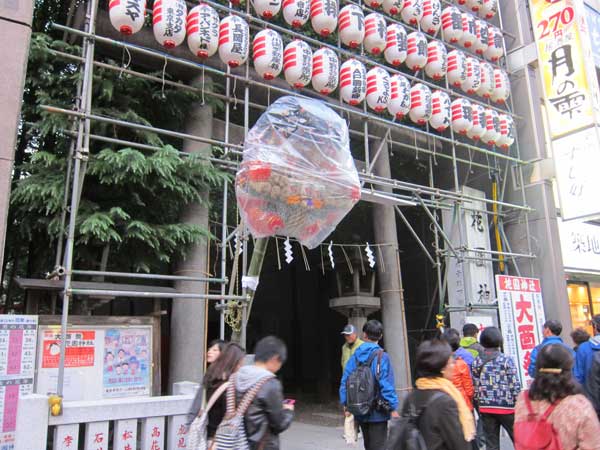
今年は酉の市が三回あります。もう熊手を買いました。同じ日に新しい仕事の契約を結びましたから、去年のよりサイズアップしました。新宿花園神社のこの祭りが大好き。たくさん水商売のオーナーが参拝にきます。でも、酉の市が三回ある年は、火事の危険が高くなると言われています。
With an entrance on Yasukuni Dori no wider than the average office building, the large Hanazono shrine in Shinjuku can easily be missed. Except in November, when the entrance is filled with lanterns and a giant rake, protected in plastic from the rain, for Tori no Ichi festival.
This festival centers around the sale of lucky rakes, made of bamboo and hot glued ornaments including rice, pine, gold coins, tai fish, and other lucky charms. One variation included all the Anpanman characters.
This year, I “sized up” from last year’s rake. The first day of the festival, I signed a new contract so I guess last year’s rake worked! I dutifully took last year’s rake back to the shrine, and added it to the pile of old rakes.
When you purchase a rake, the sellers gather around and clap wood blocks to wish you luck. I saw one rake purchased that cost 300,000 yen (yes, over US $3,000) and had to be carried by two men. Delivery is probably free when you buy such a huge one.
What makes this particular shrine fun is that all this spiritual and monetary focus caters to the Shinjuku nightlife world, as it stands in the center of Kabukicho, Golden Gai, and Ni Chome.
Because of the vagaries of the lunar year, this year there are three days this month for the festival (Nov 2, 14, and 26). There’s a superstition that when there’s three festival days, there is an increased risk of winter fires.
As fall turns to winter, I expect to hear small groups of people walking my residential neighborhood and clapping wood blocks to warn residents of the danger of fire. In the meantime, this oddly patched warning showed up at a train station. I wonder what word is underneath the English correction.
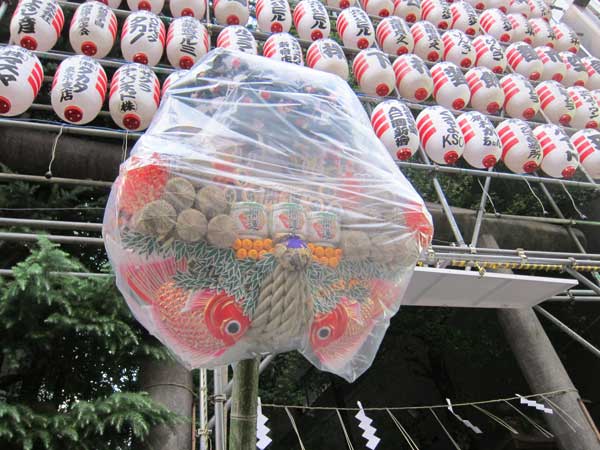
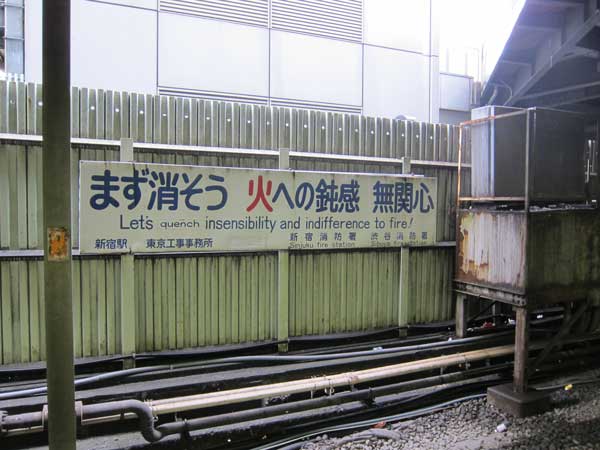
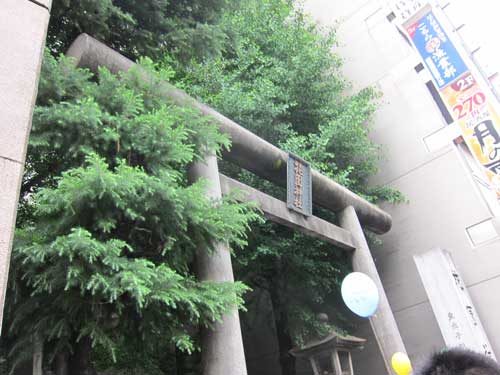
蒸し暑い東京の夏は、日陰と木がとてもいいです。花園神社の入り口は新宿の混んでいる靖国通りの前です。神社はだれでも歓迎します。入ると、交通やネオンからちょっとのがれて、肉体的にも精神的にも一休みできます。
In Tokyo’s hot and humid summer, shade and trees are always welcome. I love how the entrance to Hanazono shrine faces busy Yasukuni Dori in Shinjuku, offering a physical and spiritual respite from traffic, commerce, neon, and host clubs.
My friend Alastair Townsend sent me a link to a great Economist article about rice farming in contemporary Japan: highlighting its spiritual dimensions and the challenges of rural abandonment.
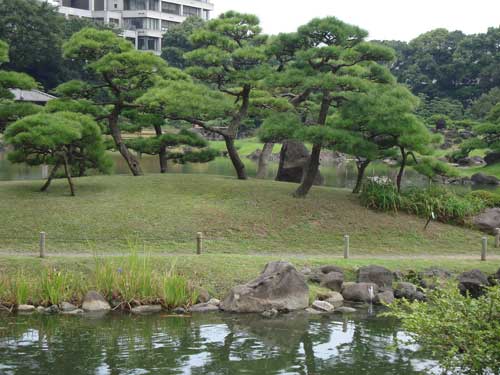
Traditional Japanese garden Kyu Shiba Rikyu dates to 1678 when land reclaimed from Tokyo Bay became the residence of Okugawa Tadatamo, an official of Tokugawa Shogunate. Kyu Shiba Rikyu is one of Tokyo’s oldest gardens, along with Koishikawa Korakuen. Kyu Shiba Rikyu was destroyed by fire in the 1923 earthquake, rebuilt and gifted by the Emperor as a city park.
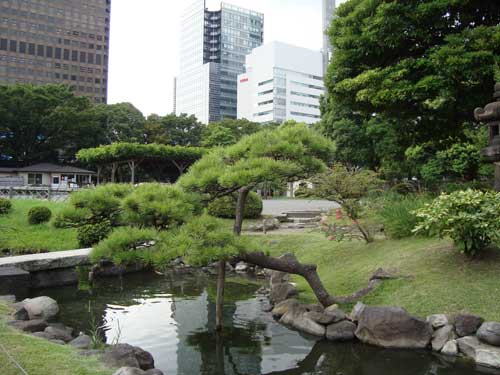
Today this stroll garden with a focal pond and two small islands sits steps from Hamamatsuchou station, and surrounded by office buildings, bullet trains, the JR Yamanote line, a monorail, elevated train, and two elevated highways. The pond reflects manicured black pines, office towers and billboards. There is also a very elegant archery range with grass lawn, tatami seating area, and targets inked by hand. (See photos after the jump below).
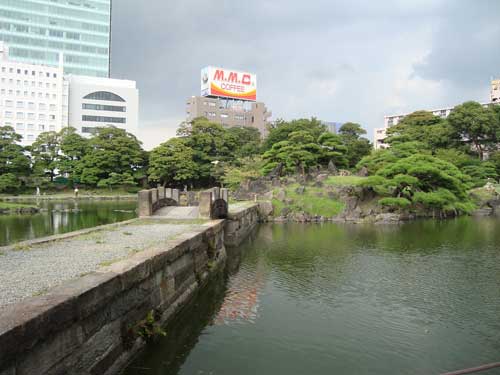
The pond and island were created over 400 years ago to recall China’s Seiko Lake (Xi Hu) and Reizan sacred mountain in Hangzhou (Zhejiang). Like at Koishikawa Korakuen, Kyu Shiba Rikyu was created at a time when garden design, philosophy, literature, and painting all borrowed heavily from China. Given our last century’s conflicts between Japan and China, is it too much to hope for artistic borrowings in this century?
A wonderful garden diplomacy would be a photographic exploration of these 400 year old Japanese gardens and the Chinese landscapes that inspired them. How have the natural and designed environments changed? What contemporary landscapes could inspire today’s art exchanges?